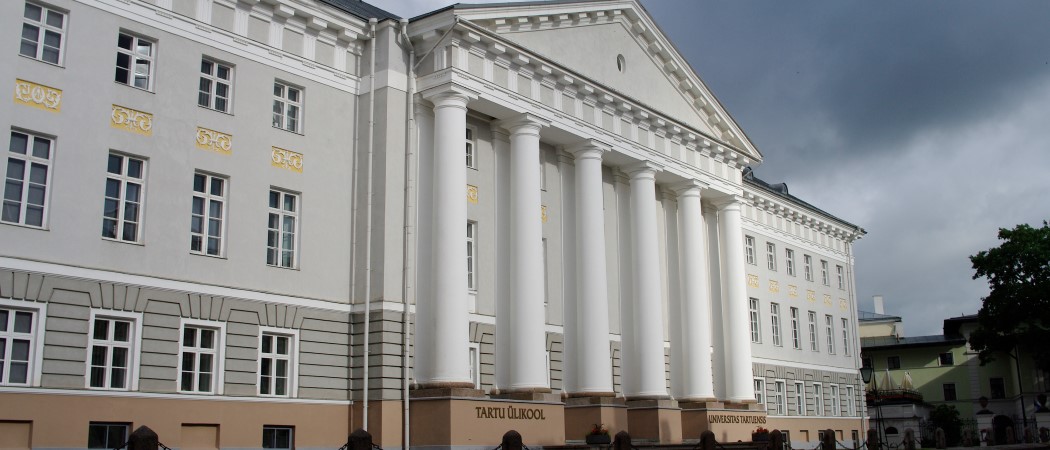The University of Tartu joined the Science|Business Network of universities, companies and public-sector organisations on 4 January 2021. We welcome them, and republish here their first announcement of latest news. More information about the Science|Business Network here.

An international consortium led by researchers from the University of Tartu (UT) and start-up GScan OÜ received 7.5 million euros from the European Commission to create a large-scale prototype of a cosmic-ray tomography device. In the course of security checks, the device would enable border control, customs and law enforcement authorities to detect illegal goods in trucks and sea containers safely and fast.
According to Madis Kiisk, Associate Professor in Ionizing Radiation Physics of the University of Tartu and co-founder of GScan, there is currently no technology that would be cheap and fast enough to scan large quantities of cargo. This is why only a fraction of cargo is scanned in the European Union and the international trade in general. Researchers from the UT Institute of Physics and iCV laboratory of the UT Institute of Technology and the start-up company GScan OÜ are trying to find a solution to the problem during a four-year project.
Currently, X-ray devices are used at ports and airports to scan luggage. X-radiation, however, can harm the people close by, and its use requires special training and authorization. The technology created in GScan in cooperation with researchers of the UT and their partners within this EU-funded project aim to detect illegal goods by using safe natural radiation that passes through us every day.
In fact, radiation of cosmic origin – essentially a stream of high-energy particles – reaches the ground all the time. Muons, which can penetrate even several kilometers deep into the ground, have an important part in the radiation. As the radiation passes through various substances, part of the muons are scattered. The strength of scattering depends on the elementary composition of the substance, which makes it possible to use muon radiation to distinguish bodies based on what they are made of.
The development of this technology received funding from the European Commission’s programme Horizon 2020, aiming to support the development of technology enhancing the security of society. According to Gholamreza Anbarjafari (Shahab), Professor of Computer Vision at the University of Tartu, the coordinator of the project, it is a groundbreaking technology that will increase the security of the whole society. "The project is a good example of a long and fruitful collaboration between a university and start-ups that brings laboratory science to society," said Anbarjafari.
Andi Hektor, a representative of GScan, expressed hope that the project would help the technology to be made in Estonia to make it to the world market. “I am glad that we have completed the first part of a very complicated journey and been able to create unique algorithms, laboratory prototypes and software despite limited funds,” said Hektor.
The first large-scale prototype will completed in four years
One project partner is the Estonian Tax and Customs Board. According to Ants Kutti, Head of Customs on Eastern Land Border of its Customs Department, the technology being developed would make customs controls much faster and more efficient in the future. “This is the world’s most innovative development project in the field of customs control technology in the last decade,” said Kutti.
The cooperation project SilentBorder, in which the natural radiation tomography scanner is developed, brings together research institutions, companies and public sector institutions from Estonia and abroad. In addition to the Institute of Technology and the Institute of Physics of the University of Tartu and GScan OÜ, the project involves the Italian special electronics manufacturer CAEN, the German space technology agency DLR, the international consultancy company SGS, KU Leuven from Belgium, the University of Sheffield from the United Kingdom, and the customs offices of Estonia, Finland and Turkey. Invent Baltics OÜ helped to compile the project proposal. The project ends in April 2025, when the first full-size prototype has been tested under real conditions and is operational.
For more information:
Web page of the iCV Lab at the Institute of Technology of the University of Tartu;
Web page of GScan with videos illustrating the work of the tomography scanner being developed.
Further information:
Gholamreza Anbarjafari (Shahab), Professor of Computer Vision, Head of iCV Lab at the Institute of Technology of the University of Tartu, +372 5886 5559, [email protected]
Andi Hektor, board member of GScan OÜ, +372 5615 0288, [email protected]
Madis Kiisk, board member of GScan OÜ and the Institute of Physics of University of Tartu, +372 516 9239, [email protected]




 A unique international forum for public research organisations and companies to connect their external engagement with strategic interests around their R&D system.
A unique international forum for public research organisations and companies to connect their external engagement with strategic interests around their R&D system.